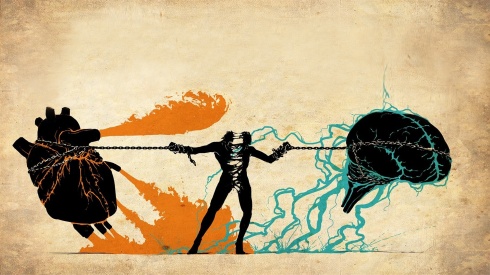Too often, we confuse “spirituality” with “religion,” or the words are used interchangeably, without any thought given to their subjective meaning. Is spirituality the interior personal experience, and religion the sacred doctrine or holy law? Does spirituality become religion when we try to share it with another person or pass it on to another generation? Could they be two subtly different ways of describing the same experience?
Religion is not only our shared set of values, or the way we create meaning in the world, or our method of contemplating the universe (Oneness, Brahman or God). Religion is made of many perspectives in many locations, and is the key to co-creating a multi-dimensional worldview. Religion is a map that is continually being drawn from the inside. And while it was Alfred Korzybski who coined the term “the map is not the territory,” Korzybski himself knew that our “knowledge of the world is limited both by the human nervous system and by the structure of language.”
For the sake of analogy, let’s briefly consider a full, rich, complete and conscious life to be both – the exterior and the interior, the media and the message, the sheet music and the song itself. We must make this distinction, as some people have the map firmly in hand (some even know it by heart), but have never once planted their feet on the ground. And some people have lived in a place their entire life but never truly know where they are in orientation to others.
If religion, then, is our spiritual map of the world – a man-made rendering co-created by a collective consciousness, yet always falling short of the ineffable whole of the Cosmos – then which maps (or parts of them) should we keep, and which should we discard? Where are the unexplored places that we should continue to chart on our own?
Consider the ancient cartographer’s parchment with those dark and dangerous areas illustrated with inky shadows and fanged sea monsters (“Here there be dragons!”). Those areas remained ominous and unknown until some brave and courageous (and most times, well-funded) soul ventured into the darkness and provided detailed reports of the seas, deserts and caves. Are there any of these dragons left today?
Or what about the bright and colorful Rand McNally road atlases? As children, they kept many of us active in the backseat during cross-country road trips with their arterial red and blue highways stretching across each page. But, the states were sorted alphabetically, not spatially or intuitively, and occasionally you’d hit some road construction that wasn’t on the map. Then, you’d have to pull out a pencil and chart your own course. How do we sort, classify and organize the maps we use today?
From these subtle changes in roadways, borders and territories to huge shifts in actual landmass, the world has changed dramatically since these maps were drawn, and continues to change faster every day. Google Maps now provides a modern, interactive, up-to-the-minute rendering of the entire planet, delivered to the screens in our vehicles and the devices in our pockets. Every shadow and corner of the world is now available on a display at your fingertips.
Which spiritual maps (or religious worldviews) are we holding onto out of sentimentality or posterity? Which sections of these interior maps and mythologies can be left behind, and which are just as true and relevant today as the day they were written? Continue reading


 e are born. We are taught to communicate. And most of us are immediately asked to choose a side.
e are born. We are taught to communicate. And most of us are immediately asked to choose a side.





